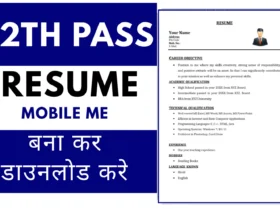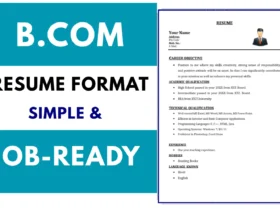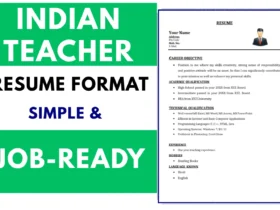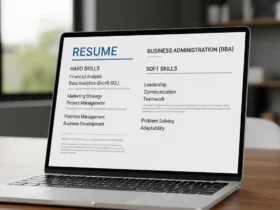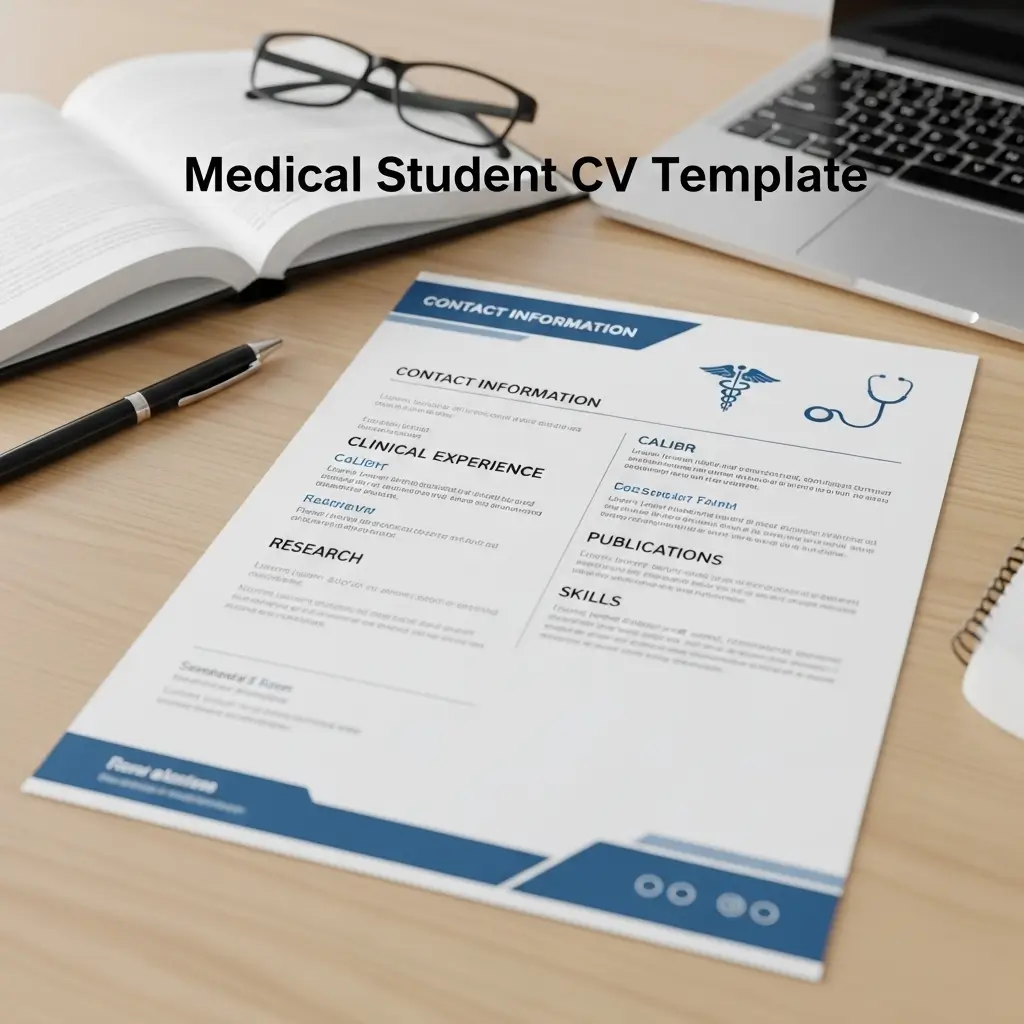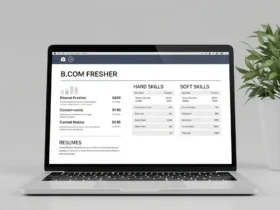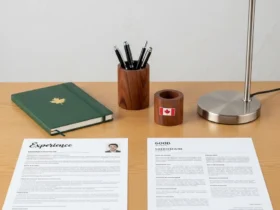Hello future medics! Thinking about working in medicine? It’s a big dream, and getting there needs more than just good grades. You’ll need something called a Medical Student CV Template, which is like your personal story for medical programs. We’ll look at what this document is all about, whether you’re aiming for a medical career in the United States or the United Kingdom. It shows off your school work, patient-care time, and all the neat things you’ve done. This guide will help you put together a CV that makes you stand out, using examples from both sides of the Atlantic.
Overview
What is a Medical Student CV Template (CV/Curriculum Vitae)? It’s a longer, more filled-out paper than a regular job sheet. It goes deep into your school history, work, and extra activities, showing your journey towards medicine. It is used for applying to medical programs, scholarships, or even your first Nursing jobs after medical school. For US students, this document helps with residency applications through systems like ERAS, making sure program directors get a full picture of your background.
For UK students, it is a main piece for training posts and is often called a portfolio, a collection of your learning and experiences. General parts include your name and contact info, school background, any work with patients, research you’ve done, and groups you’ve led.
Sample Medical Student CV Template
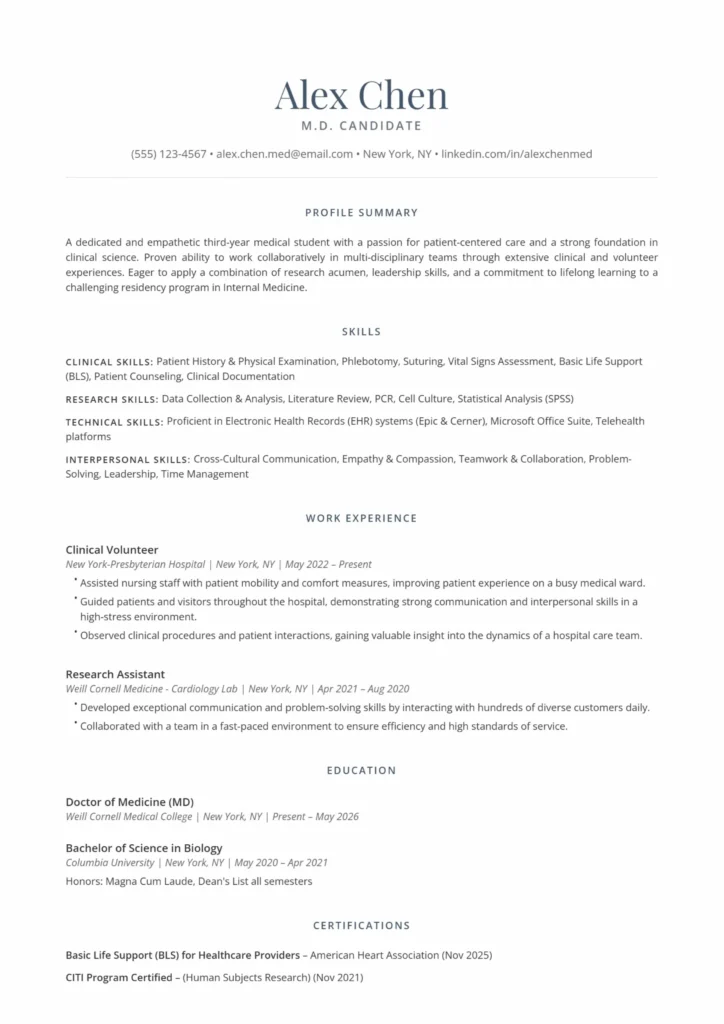
👉 Download Link: [Get Here]
Historical Perspective
How did these records start? A long time ago, getting into medicine in both the US and UK was less formal. It was more about learning from an older doctor. People relied on word-of-mouth and personal connections rather than long papers.
In the US, things changed a lot in the early 1900s. A report called the Flexner Report pushed for better medical training, making schools stricter and more scientific. This meant students needed to show their qualifications in a clearer way. The American Medical Association (AMA) and the Association of American Medical Colleges (AAMC) also helped set new levels for medical education. This structure made what you might call a “Nursing Certification” a necessary tool for showing your worth.
In the UK, groups like the General Medical Council (GMC) were set up in the mid-1800s to keep doctor training to a good level and make sure medical professionals were well-regulated. Over time, as medical schools grew and the National Health Service (NHS) began, this led to more organized papers showing what a future doctor had done. These papers grew to include not just school grades but also practical work and skills gained through training.
Current Opinions/Trends
Today, medical programs in both countries look for more than just high marks. They want to see a well-rounded person.
What’s good right now:
- Being a good all-around person: Show what you do outside of school. This could be sports, music, or helping others in your local community, like volunteering at a food bank in Manchester or a youth club in Ohio. This shows you have a range of abilities beyond just studying.
- Research time: Even small projects where you learn how research works are good. This shows you like to ask questions and find answers. Think about science fairs in the US, like the Regeneron Science Talent Search, or Nuffield Research Placements in the UK. Any time spent in a lab or helping with a study can be a big plus.
- Leading groups: Taking charge in school clubs or projects shows you can guide others and work in a team. This could be being captain of your football team or head of the debate society at your high school or Sixth Form college. Programs want to see you can take on responsibility.
- Patient-focused time: Any time spent near patients, even observing, helps. It shows you care about people. In the UK, this might mean a placement within the NHS, observing doctors in a hospital ward or a GP surgery. In the US, it could be volunteer work in a hospital in your town, helping patients or visitors.
- People abilities: Being good at talking, showing care, solving problems, and being fair are huge. These are often shown through stories from your time in different roles, whether it was working at a fast-food place like McDonald’s or a local shop. These everyday experiences teach you how to interact with different kinds of people.
In the US, the ERAS system helps put your info together for residency applications, asking you to carefully list your experiences. In the UK, you might use Oriel for training applications, where you also need to give careful details about your experiences and what you learned. Both ask for careful details.
Challenges/Controversies
It’s not always easy to put together a shining Medical Student CV.
Hard parts:
- Not much patient time: It’s tough for students to get hands-on experience, especially early on. The recent health crisis made this even harder for everyone, limiting chances at local GP surgeries in the UK or clinics in the US. Finding placements or shadowing opportunities can be a real hunt.
- Big race for spots: Getting into medical programs or good residencies is super competitive. Your record needs to stand out among many other hopefuls. Think about how many students apply to top universities like Oxford or Harvard for medicine; the numbers are vast.
- School versus everything else: Medical school is hard. Finding time for extra activities, research, and volunteer work can be a real struggle. Balancing your A-levels or AP classes with everything else is a real juggle, making good time management a must.
- Telling your story well: It can be hard to write about what you’ve done in a clear, strong way, without using too many big words. Knowing how to pick the best parts of your experience and explain them clearly takes practice. You want your experiences to sound strong and active.
- Coming from another country: Students from outside the US or UK face extra steps like different tests and needing to learn about the local health rules (like the NHS in the UK or various insurance systems in the US). They might also feel alone at times and need good support systems to help them along, from mentors to peer groups.
Future Outlook
What will Medical Student CV Template look like in the years ahead? They’ll keep changing as medicine does.
Likely future points:
- Tech smarts: Showing you know how to use digital tools for health, like electronic patient forms or health apps, will be a big plus. Think about knowing how to use systems like Epic or Cerner, common in US hospitals, or NHS digital tools. An understanding of how AI might fit into future healthcare will also be valued.
- Team player abilities: Working well with other health professionals will be even more important. Documents will show examples of working in groups, maybe on projects with nursing students or pharmacy students. Healthcare is a team sport, and showing you play well with others matters a lot.
- Human touch: Things like care, kindness, and being good at talking to people from all walks of life will be even more looked for. Showing you understand different cultures, whether in diverse US cities like New York or in multicultural London, matters a lot. Medical programs want doctors who can connect with all patients.
- Deep thinking and looking things up: A solid interest in science and asking hard questions will still count a lot. This means showing you can look at facts, understand research, and figure things out for yourself. Being able to think for yourself and learn new things will always be valuable.
- World health and local care: Showing you care about health problems in your local area and around the world will be a plus. Maybe you took part in a health awareness drive in your town or learned about global health issues affecting places like Africa or parts of Asia. This shows a broader view of health.
Medical programs want students who can work with new tools, work well with others, and always put patients first, no matter what changes come. They are looking for people who can adapt and grow with the ever-changing world of medicine.
Conclusion
So, Crafting your Medical Student CV Template is a big job, but it’s a chance to tell your story. It shows who you are beyond grades and tests. Whether you’re aiming for a hospital in London or New York, remember to keep your CV updated, show your true interest in helping people, and highlight all the ways you’ve grown. This document isn’t just a list; it’s your first step toward making a real difference in the lives of many.
FAQs
What’s the main point of a Medical Student CV Template?
It’s your story to medical programs, showing your grades, patient-care experiences, research, and leadership. It proves you’re ready for medical school and the work ahead. For US and UK programs, it helps them get to know you better and see your fit for a career in medicine.
What’s the main point of a Medical Student CV Template?
It’s your story to medical programs, showing your grades, patient-care experiences, research, and leadership. It proves you’re ready for medical school and the work ahead. For US and UK programs, it helps them get to know you better and see your fit for a career in medicine.
How long should be Medical Student CV?
Often, two to three pages is common. If you have a lot of research or publications, it might be a bit longer, especially for academic roles or more senior applications. It should be long enough to tell your story without adding unnecessary words or fluff.
What parts should I definitely put in my student doctor record?
Always put your contact info, school history (most recent first), any patient-care time (shadowing, volunteering in places like local clinics or care homes), research projects (even small ones you helped with), groups you’ve been a part of (especially if you led them), and any jobs you’ve held. For UK student doctors, mention your General Medical Council (GMC) number if you have one.
Are there things I should not put on my Medical Student CV?
Yes, avoid private details like your age, gender, race, or family status. In both the US and UK, these are usually left off to avoid unfairness in the selection process. Keep it about your work and school life, focusing on what makes you a good candidate for medicine.
How is a Medical Student CV different in the US compared to the UK?
The main idea is the same – show your suitability for medicine. But US students often apply through a system like ERAS for residency after medical school. UK students often use Oriel for training posts and build a “portfolio” which is a bit like a student doctor record with more reflective notes on their learning. The type of patient-care time might also look a bit different depending on the healthcare setup in each country, like the publicly funded NHS in the UK versus the mixed private and public systems in the US.
Does volunteer work really count?
Absolutely! Volunteer work shows you care about people and your community, which is a big part of being a good doctor. It helps you get valuable abilities like talking to people from different backgrounds and working in a team. In the UK, thinking about what you learned from volunteer time, rather than just listing it, is often more important.

